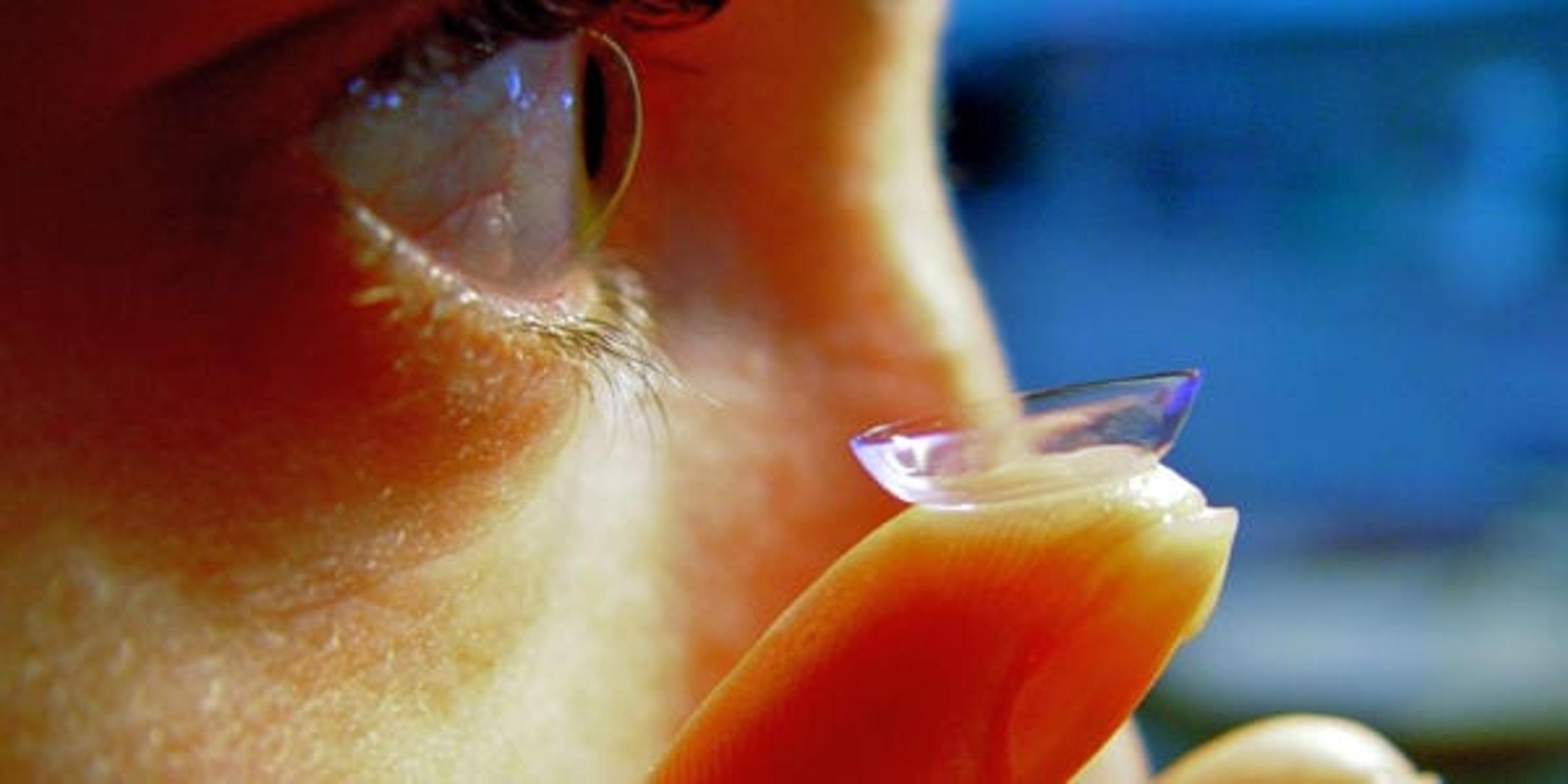Contact Lenses 101

Hannah Brauer
| 4 min read

If you’re looking to join the 45 million Americans who wear contact lenses, you may feel a little intimidated. After all, they’re more invasive and require more attention than the glasses you’re used to.
Contacts may be the right choice for you if you prefer clearer peripheral vision, need vision aids that move with your eyes or simply feel more confident without glasses.
Which type of contacts are right for you?
Before you make an eye appointment, it’s a good idea to know what you’re looking for. Do you need a permanent replacement for glasses, or an occasional substitute for exercising or special occasions?
There are many types of contacts to choose from:
RGP vs. soft lenses
- Rigid gas-permeable (RGP): harder, plastic lenses that last longer and improve vision more than soft lenses, but require more attention and consistent wear.
- Soft lenses: soft, flexible plastic lenses that do not require consistent use and are more comfortable than RGP lenses, but are more difficult to remove and do not correct all vision problems.
Daily-wear vs. extended-wear
- Daily-wear lenses: soft lenses that can be thrown away after one use. These tend to be more expensive than extended-wear, but require less care and suit those who only wear contacts occasionally.
- Planned replacement: soft lenses that are worn one day at a time and replaced on a schedule, typically every two weeks or monthly.
- Extended-wear: either soft or RGP lenses that can be worn up to seven days without removal, with some approved for up to 30 days. These lenses can increase the risk of complication and require more care.
- Extended-wear disposable: soft lenses available to wear from one to six days then discarded.
Putting in and taking out your contacts
It’s normal to have issues putting in and taking out your contacts – your body is trained to blink when anything gets close to your eye. Always thoroughly wash and dry your hands before putting in or taking out your lenses and follow these steps to start practicing:
Putting in your contacts
- Always start with your right lens first to avoid mixing up your contacts. Place the lens on the index finger of your dominant hand. Make sure the edges are sticking straight up – if the lens has a lip or flattens at the edges, it’s inside out.
- Gently pull your upper eyelid open with the index finger of your non-dominant hand and your lower lid down with the middle finger of your dominant hand.
- Move the contact toward your eye and try not to blink. It may help to focus on a mirror in front of you rather than your finger.
- Place the contact on your eye, making sure it’s centered. Blink slowly to make sure the contact doesn’t move.
Taking out your contacts
- Pull your eyelid down with your finger and look up.
- Touch the lens using the index finger of your dominant hand.
- Slide the lens to the white part of your eye.
- Gently use your index finger and thumb to squeeze and remove the lens. If you’re using daily lenses, dispose of the contact or place in solution if you’re using extended wear.
Caring for your contact lenses
Contact lenses are medical devices, so they should be taken seriously. A few dos and don’ts from the American Optometric Association:
- Do wash your hands with non-fragrance soap and water before handling your contacts
- Don’t “top off” the solutions in your case or reuse old solution
- Do remove lenses before swimming, showering, or engaging in any other water-related activity
- Don’t leave them in your eyes for longer than recommended to avoid serious complications such as eye pain, blurred vision, eye ulcers or overgrowth of blood vessels
- Do store lenses in their proper case to avoid exposure to bacteria
Do you wear contacts? How long did it take you to get used to them and what are your best tips for making the transition? Share with us in the comments.
If you liked this post, check out these other blogs:
Photo credit: Etan J. Tal





